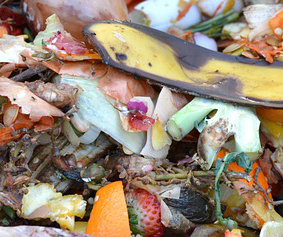Food packaging automation technologies can increase productivity and improve food safety. We highlight three key packaging technologies worth investigating.
1. Image-Based Sensors
Foreign objects in packaged foods are a key cause of recalls and can lead to both physical harm and reputational damage. Some companies are incorporating food packaging automation solutions that rely on cameras to detect foreign objects before products leave production facilities.
In one example, researchers from Ritsumeikan University in Japan used a tactile-based image sensor mounted on a high-resolution camera to look for hard objects, including shell and bone fragments, within soft foods. This technology found sub-millimeter foreign bodies and required only 10 seconds to scan a piece of food.
Some sensors can sort food, such as rice, based on appearance. If the rice does not meet specifications—or if a contaminant is detected—the device emits coordinated air puffs to blow the subpar product or contaminant into a reject bin.
Image-based sensors do not replace people from inspection processes. The goal is to boost quality control by combining advanced technology with human oversight. This allows food packaging plants to reduce the risk of unsafe consumables reaching the market.
2. Robots
Robots have been game-changers in food packaging automation. Statistics show that Chinese food and beverage industry clients purchased an estimated $196 million in robotic technology in 2022, with companies from the U.S. investing roughly $160 million in these technologies. These numbers have climbed since 2020, suggesting more company leaders are embracing robotics for their operations.
Companies that don’t have enough employees to handle the workload can compromise safety if they give workers more responsibilities than they can handle or force them to work too quickly. However, robots can ease some of that strain. One robotic top loader for wrapped food products processes up to 120 products per minute, depending on the type.
In another case, a food packaging plant had only 30 employees but needed to switch to 24/7 production to meet customer demand. Adding three collaborative robots, or cobots, to the workflow made it safe for the small team to ramp up activities without getting overwhelmed.
It can take food packaging plant leaders time and effort to figure out the best ways to bring robots into a facility. It helps to determine which tasks are most prone to errors and likely to result in injury. Alternatively, managers can ask line workers which duties feel the most cumbersome or dangerous.
Many employees are initially hesitant about working with cobots. They feel more positive and comfortable about these changes when they realize the machines supplement their work rather than replace it.
3. Upcycled Food Packaging
Food packaging automation has benefits that extend beyond the production environment. Singapore-based Alterpack uses automated equipment to turn spent grain into takeout containers and other types of packaging. The packaging is microwave and freezer-safe, and people can toss it into their compost heaps after use.
The company’s goal is to help reduce dependence on single-use plastic packaging. The process requires cleaning raw materials, mixing a specialty formula and molding it into desired shapes. Automation keeps these steps safe and consistent.
Other types of automation specific to food packaging focus on consumer safety. One project from the Fraunhofer Institute for Process Engineering and Packaging involved embedding packages of meat and fish with chemosensors to measure freshness. The sensors change color automatically when exposed to volatile compounds that indicate product spoilage. The visual indicator makes it easy for consumers, grocery store workers, and others to see when food is no longer safe to sell or eat.
Elsewhere, a team of researchers from Harvard University and Singapore’s Nanyang Technological University made a type of smart food packaging primarily constructed from corn protein. The packaging contains innovative nanoscale mesh fibers and natural antimicrobial compounds programmed to sense common kinds of bacteria in food. When the bacteria are detected, the packaging automatically sprays out tiny amounts of antimicrobials to keep food fresher and safe to eat for longer.
These are just some of the forward-thinking ways food packaging designers can incorporate automation into their production process. Options like these will likely become more widespread as more people experiment with what’s possible, spurring progress in food safety, productivity and waste reduction.





